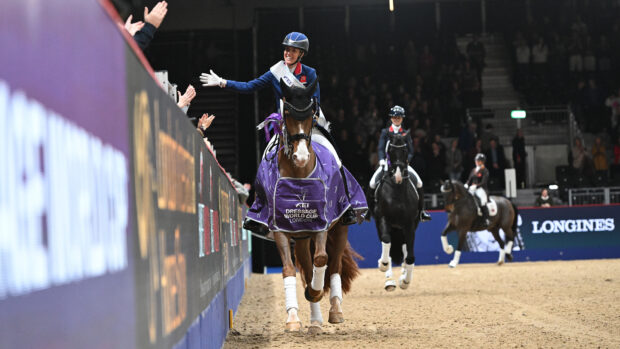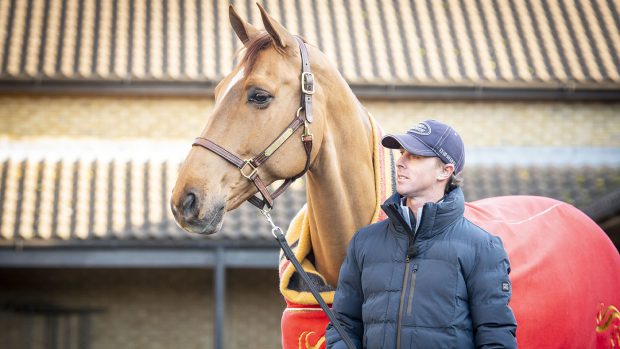Thorough training and preparation, good behaviour and being true to its breed type. Len Bigley, who will assess conformation in the Blue Chip British Show Pony Society (BSPS) Heritage mountain and moorland championship at Olympia on Monday 21 December alongside Henrietta Knight, reveals the criteria their winner will fulfil.
Q. How long have you been judging and on what panels?
A. Over 40 years for the national pony society (NPS) — plaited and M&M — Welsh Pony and Cob Society, British Show Pony Society, Coloured Horse and Pony Society and British Show Pony Association.
Q. What particularly appeals to you about natives?
A. They are family friendly. They tend to have laid back temperaments, which means you can just get them out of the field and ride them, even after long spells of rest. This has led to a huge growth in their popularity, which is wonderful for the native breeds.
Q. Is there a downside to their rise in popularity?
A. There has been a trend towards losing traditional breed characteristics such as substance — it is essential that traditional breed standards are followed by judges or we will blur the lines between the individual breeds and end up with a universal M&M pony.
Judges should immediately be able to recognise and reward animals that would fit into their native environment. It is very tempting for a judge to emphasis the riding qualities at the expense of native type – particularly in such things as size and refinement.
Q. Have you judged at Olympia before?
A. Once before when the competition was run by the NPS.
Q. What do you see as the principal challenge facing competitors at Olympia?
A. After a long and hard season – I think that many tend to do too much nowadays – it is not easy to produce polished animals who are still enjoying the show ring in December.
Q. What will you be looking for when you are judging at Olympia?
A. Breed type coupled with breed quality – by which I do not mean refinement. I expect to see natural movement and good feet/limbs. I will be looking for excellence within conformation but you have to remember the conformation of an Exmoor, for example, is not the same as a New Forest pony.
Continued below…

What is a native judge at Olympia looking for?
The Olympia mountain and moorland judge reveals what he is looking for, critical mistakes he hates to see and much
Q. What do you hate to see and what would you mark down?
A. Lack of limb. I also hate to see animals forced out of their natural paces.
Q. What is the one ‘must-have’ in this class for you?
A. Animals should be instantly recognisable in breed type and be within their breed standard.
Q. You will be judging conformation. Do you have any tips for the exhibitors?
A. Judges only have a very short time to assess a pony, therefore it is essential that riders have taken time to train their animals to stand up in the correct manner as quickly and as calmly as possible. It is surprising how many exhibitors neglect this vital training.
Q. What is your equestrian background?
A. Together with my wife, Ann – and now children Simon and Catryn – I have been breeding and showing for more than 50 years under our family’s Llanarth prefix. We’ve shown everything from Welsh breeds and pure- and part-bred riding ponies to in-hand and ridden hunters.
We’ve had major in-hand victories at Horse of the Year Show (HOYS) – we have qualified for the Cuddy supreme in-hand championship some 45 times and been supreme overall three times with home-bred animals. Our riding pony stallion Llanarth Alleycat — who is now in his twenties and himself a HOYS in-hand champion — sired the 2014 and 2015 supreme horse Broadshard Simplicity as well as this year’s small intermediate victor Llanarth Fairplay.
Ponies of Llanarth breeding have also competed under saddle successfully at both HOYS and Olympia – Lady Vestey’s Kentchurch section Ds, who originated from Llanarth stock, have contested Olympia no fewer than 20 times.
Olympia: the judging format
The judging format is unique. Each competitor’s performance marks are displayed on a screen above the arena, but their conformation score is kept secret until the afternoon finale. This leads to huge suspense before the champion is announced. The performance judges are Rodger James and Martin Jones.
Don’t miss Horse & Hound’s Olympia report, on sale Thursday 24 December 2015.




